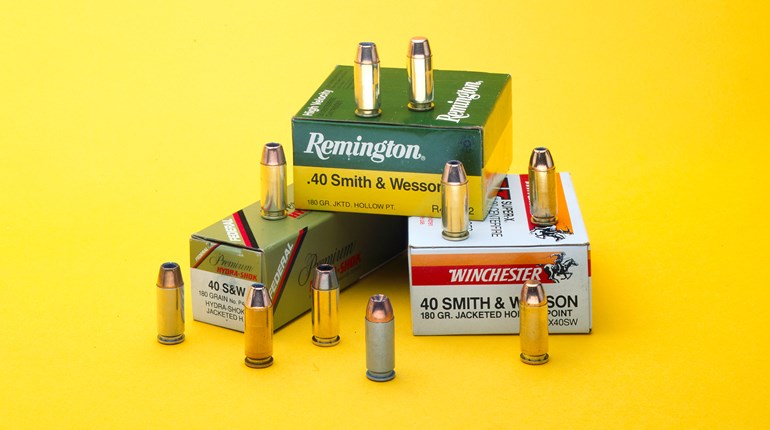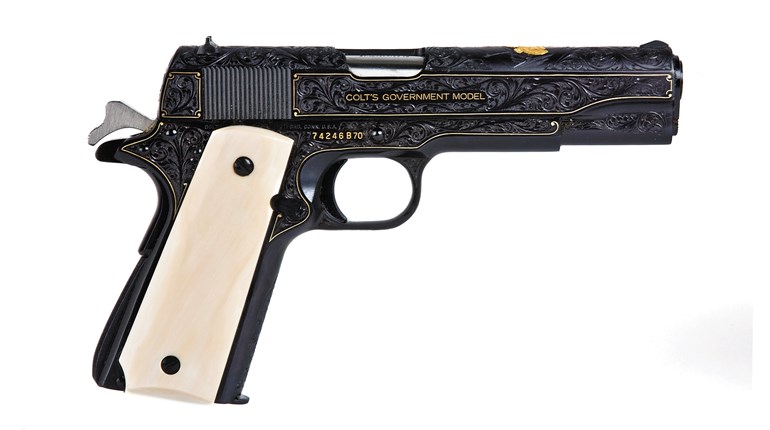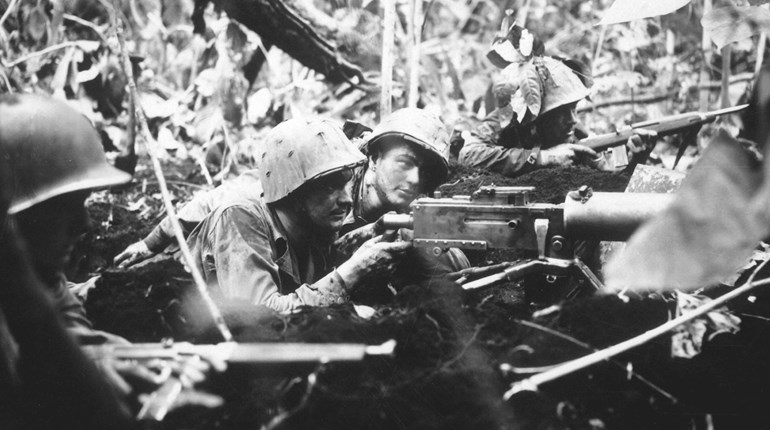
By any reasonable standard, the .44 Magnum cartridge is a milestone in handgun history. The big round came along in the mid-1950s, when America was on top of the world and American industry could make anything a sportin’ handgunner might want. By consensus, the guru of handgunning in those times was a little Idaho rancher with a big hat and gun savvy for the ages—Elmer Keith. He had been around for many years, shooting, hunting, handloading, experimenting and writing for the major outdoor magazines. Keith was widely read in the mid-1930s when Smith & Wesson took the bold step of stretching the .38 Spl., loading it hot and creating the first magnum revolver—the .357 Mag. One of the first to write a review of this new concept, Keith was still hard at it when World War II ended and sport shooting was popular once again.
For many years, Keith had hot-loaded .44 Spls. with bullets of his own design and sold them via the U.S. Mail. He developed a great deal of information about the feasibility of such a gun on a commercial basis. Smith & Wesson was exceptionally open-minded in the early ’50s and cooperated with him on a .44-caliber cartridge, which paralleled the concept used in the .357 program. It stretched the .44 Spl. case enough to increase its capacity and came up with an ultra-strong N-Frame revolver to fire the new round. The resulting gun and ammo opened to roaring acclaim and brisk sales. The now-famous Model 29 .44 Magnum was a spectacular success as a product.
I would like to digress for a moment with an observation. I was still in college when Smith & Wesson delivered the first of these big wheelguns in 1956. A few samples were out to industry writers as early as 1955, but there were relatively few guns in circulation before 1957. By 1960, the wheelgun’s positive reputation was such that all made were immediately sold. Dealers began to keep waiting lists or even inflate the price to as much as double retail. Ethical dealers, like Nate Posner in San Francisco, refused to adopt this practice and prospered for it in the long run. The point of this little aside on gun popularity and economics is simple: When a really hot product comes along, sensible people will often do insensible things.
Furthermore, the popularity of Smith & Wesson’s Model 29 was quite solid by the mid-1960s. I was a working cop in 1971, when Clint Eastwood made “Dirty Harry.” The opening scene introduced the character of a rogue San Francisco police detective and his sidearm, a Smith & Wesson 6.5-inch .44 Magnum. The scene, film, character, actor and handgun were hugely popular, particularly with working cops who yearned to get away with the antics of this celluloid hero. But, despite the allegation that the movie was responsible for the success of the revolver, the new .44 was hard to find for years before the movie ever screened. Inspector Callahan clearly spiked .44 Magnum popularity upward, but he didn’t create it.
There is another event that had at least significant effect on .44 popularity and it just might be one of the most important. Elmer Keith had a wonderful outdoor life, but one of the things that actually helped him make a living was working as a hunting guide. Keith put many hunters onto game—deer and elk mainly—over a wide span of time. On one of these trips, he encountered a situation that people still argue over. Keith was guiding a hunter on a mule deer hunt, when they turned up a really choice buck.
The animal was about 200 yards off along a ridgeline. Keith’s client hit the deer with an early shot, but the hit was in the jaw and it was obvious the shooter wasn’t quite up to the marksmanship challenge. In the next few minutes, the animal first disappeared, then came out of the timber even farther away. With no other arm available, Keith drew his brand-new .44 Magnum and began working his shots into range. After several ranging shots he got a hit and then another. The buck was down for the count, an animal that would have been subject to a lingering death had it not been for Keith’s skill. He was too much a man of the outdoors to let something like that happen. The shot was debated for years to follow—it was 600 yards. It was among the first (if not the first) game animal taken with a .44 Magnum.
There was another Smith & Wesson .44 Magnum in circulation in the late ’50s and it had been sent to another outdoor writer, Charles Askins, Jr. He had been a forest ranger, border patrolman, hunter, writer, National Pistol Champion and U.S. Army officer. It was a full, controversial life, and the most-exciting part was his time as a border patrolman, which was rife with gunfights. Askins was an experienced shooter, who had been given one of the new Smith & Wesson .44s for evaluation. He had the gun with him when he went to Indochina for a tour of Army duty as an advisor to the South Vietnamese Army. Askins had a reputation as a pistolero who would shoot quick, straight and with lethal proficiency.
In that period, the war had yet to become the violent hell so many Americans learned about. Askins even found time for hunting trips up in the central highlands. On one such trip, he was moving quietly through dense forest, when he got that creepy, hair-up-on-the-back-of-your-neck feeling. He quickly stepped off the path and went to ground. It wasn’t long before the assassin came stealthily along and even less time until Askins shot him dead.
We’ve had more than a half century of the .44 Magnum, with myriad kinds of sporting uses of the powerful revolver. It is powerful to the point that some shooters resort to .44 Spls. for fun shooting. Nonetheless, when a shooter needs a decisive winner for big-stakes shooting, the big-bore .44 Magnum makes for pretty respectable fightin’ iron.




































